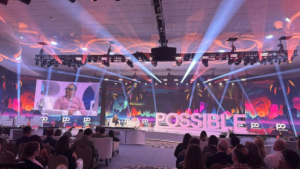Video has a key role to play as advertisers shift toward attention as metric to measure media quality and campaign performance, according to joint research from OMD Worldwide, Yahoo, and Amplified Intelligence.
The ‘Attention in Context’ study looked at more than 128,000 ads served to 4,400 respondents in the US, Canada, UK, and Australia, and found that the average active attention for video formats was 2.73 seconds – above the target threshold of 2.5 seconds. Video formats included video interscroller, native video, and native pre-roll.
Despite the strength of video, the length of the content is important to consider. 15-second spots were found to yield 3.3 seconds of active attention, compared to just 1.2 seconds for 30-second videos.
Overall, non-video interscrollers ads – ads that reveal the content as the reader scrolls down – are the most effective format in slower-scroll, highly immersive environments, delivering 3.3 seconds of active attention. Video interscroller and native video were the only other formats to outperform the 2.5-second minimum target.
“This study shows just how nuanced consumer attention really is,” said Elizabeth Herbst-Brady, Head of Global Revenue & Client Solutions at Yahoo. “The sweet spot is in combining the right formats in the right environment and context relevant to each audience. With this research, we’re understanding more about consumers as behaviour evolves, and are able to deliver more engaging experiences.”
The research also found that, while context plays a role in driving higher attention in regards to the surround content on the page, when ads are served doesn’t have any impact on the levels of active attention.
Meanwhile, unsurprisingly, Gen Z respondents showed significantly lower levels of both active and passive attention than Baby Boomers. Furthermore, among Gen Z, the only ad format to outperform the threshold was interscroller ads.
However, though there are differences when it comes to age, the same differences were not identified between genders. Between respondents who identify as either male or female, active attention (average 1.6 seconds) and passive attention (average 9.1 seconds) were identical.









